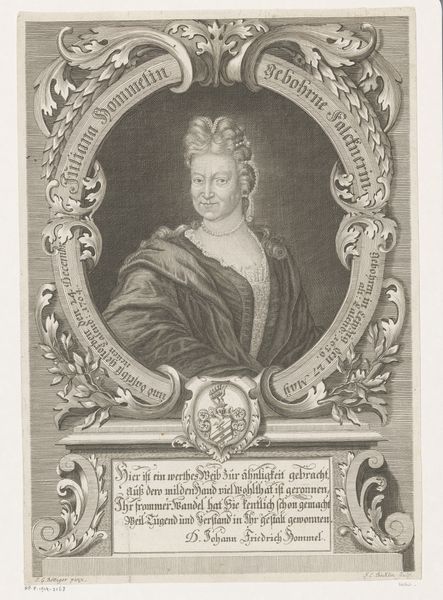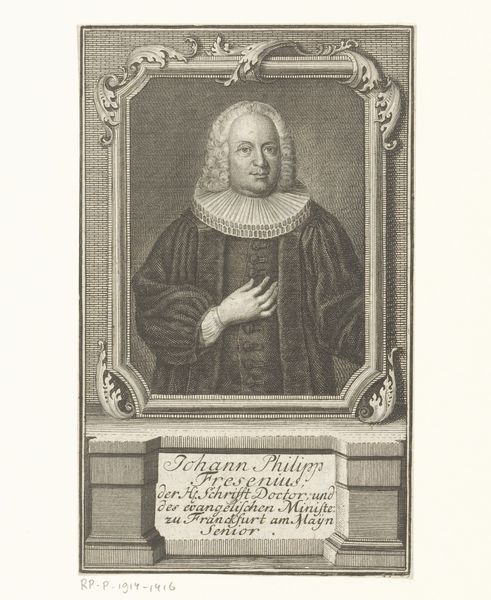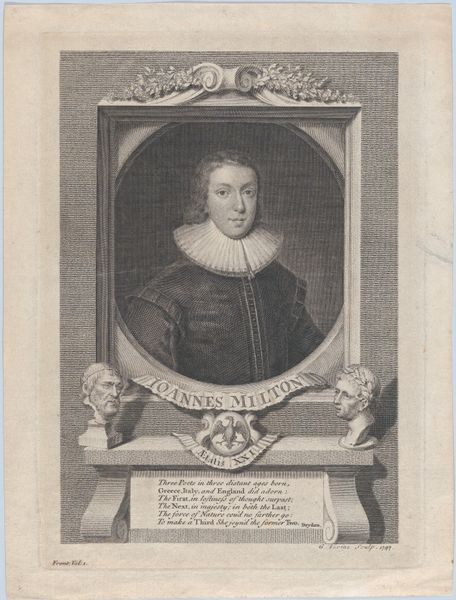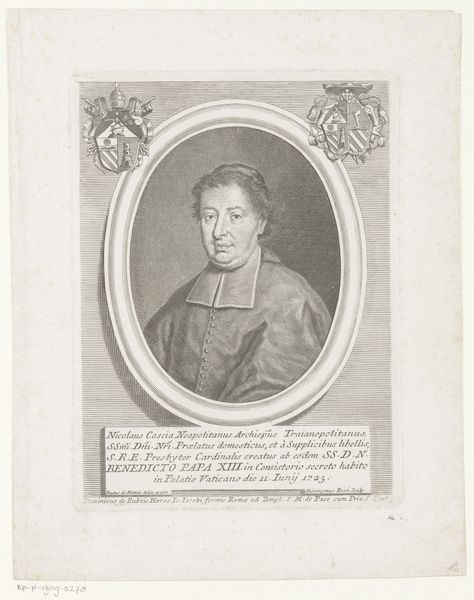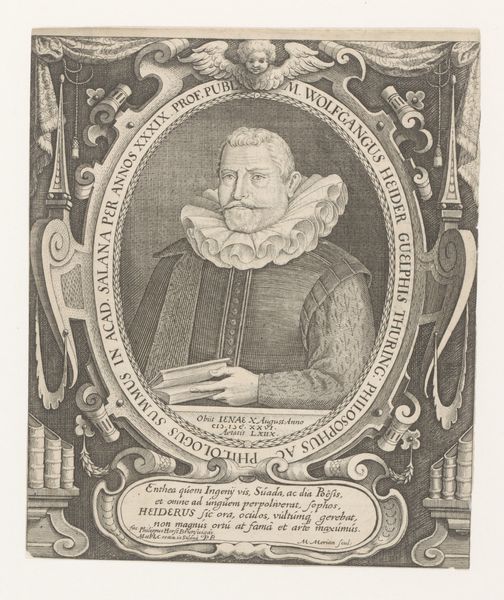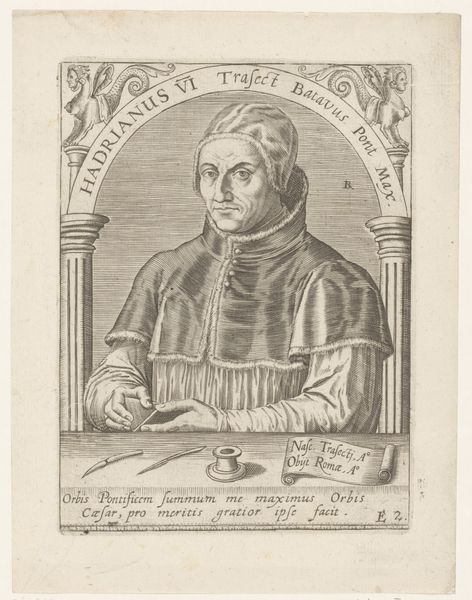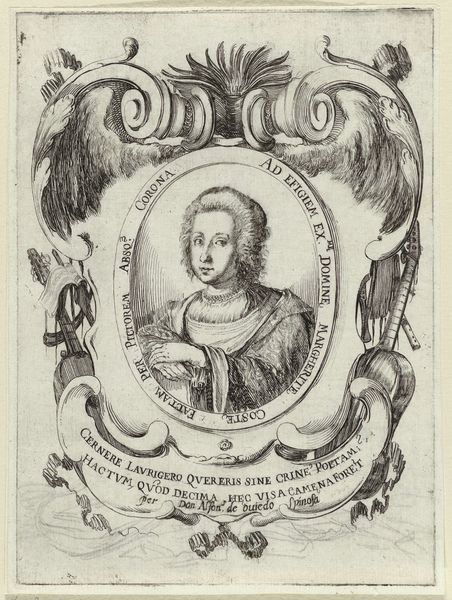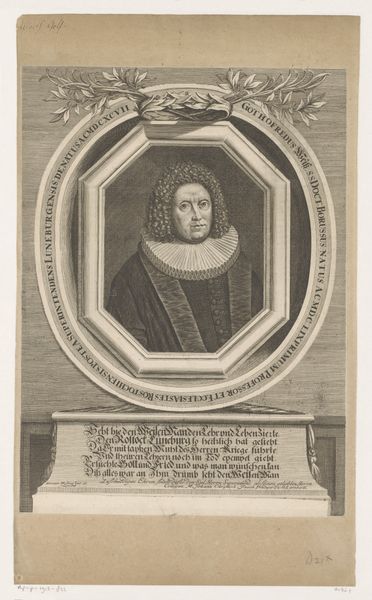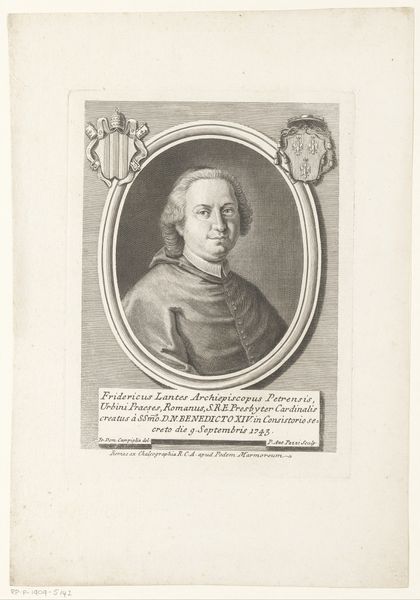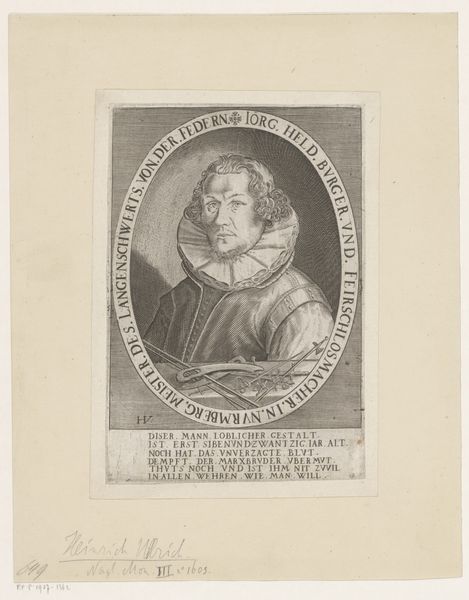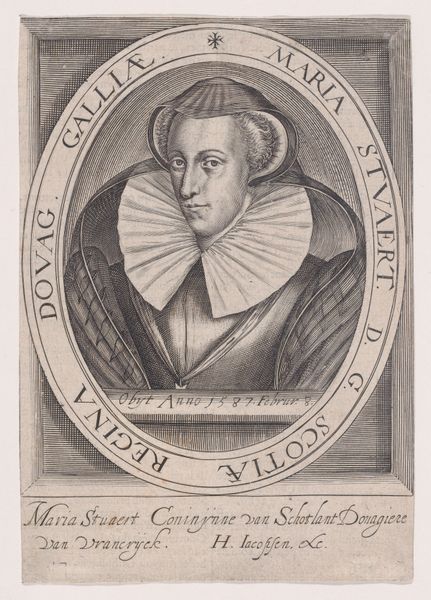
print, engraving
#
portrait
#
baroque
# print
#
line
#
engraving
Dimensions: height 254 mm, width 157 mm
Copyright: Rijks Museum: Open Domain
Curator: Here we have a 1713 engraving, "Portret van Wolfger van Würzburg," by Johann (I) Salver. It’s a baroque portrait, featuring clean, elegant lines typical of the era. Editor: My immediate impression is one of restrained power. The tight lines and circular frame feel confining, yet the gaze of Wolfger is direct and unwavering. I wonder about the conditions in which a print like this would be made, and its use to legitimize status? Curator: Precisely. Note how the circular frame, with its suggestion of classical medallions, functions to elevate the subject. The elaborate coat of arms below the portrait also signals lineage and authority through visual symbols and codified meanings. The visual organization denotes social meaning, reflecting baroque aesthetics of hierarchy and order. Editor: Looking closer at the materials, you can see the intentional labor in its production. Each engraved line would have to have been intentionally made by a craftsman and printed individually; they weren't disposable images. There is value placed on skill, and it communicates social worth and status as well. How would something like this reflect a local Franconian sensibility? Curator: Salver expertly uses line and hatching to suggest depth and texture, lending a sculptural quality to the portrait. The precise control over the medium allows him to capture a likeness, but also to idealize Wolfger. Think of how these artistic skills and engraving styles circulated information and influence throughout European intellectual circles. It's form shaping our interpretation. Editor: Yet I come back to process – what was the artist’s relationship to their work and the sitter in this case? We need to account for both how labor and access to particular techniques affected its production. Also, it seems damaged and torn from its original book binding - that removal and alteration tells another story. Curator: A valid point. Though slightly damaged, we can still glean so much about Baroque visual language through it: its ability to create symbols of power. Editor: And appreciate it not just as an image, but as a remnant of historical materials, and its journey throughout history since.
Comments
No comments
Be the first to comment and join the conversation on the ultimate creative platform.

